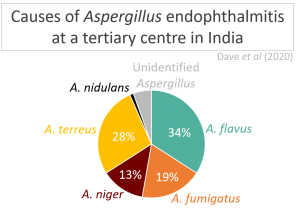Submitted by GAtherton on 16 November 2018
Itraconazole is widely used as an adjunctive treatment to help manage allergic forms of aspergillosis (eg Allergic Bronchopulmonary Aspergillosis ABPA) as it can minimise the dose of oral steroids required to control respiratory symptoms. This is important as it reduces many of the unpleasant side effects the patients experience while taking oral steroids over the long term.
Itraconazole is also prone to unpleasant and potentially serious side effects as well as strong interactions with other medications, so its dose level must be carefully monitored. As with all oral antifungal medication, itraconazole requires that a minimal serum concentration is reached to be effective and also to minimise the opportunities for the development of drug resistance. Keeping the serum levels of patients within the required therapeutic window is made more difficult by its unpredictable pharmacokinetics, often necessitating individual monitoring of each patient.
The availability of an inhaled version of itraconazole could potentially provide lower blood serum levels and therefore a lower propensity to cause side effects and adverse drug interactions. PUR1900 is a dry powder formulation of itraconazole intended to be inhaled and has just successfully completed phase 1/1B trials in Manchester, UK.
The main conclusion
- All objectives from the Phase 1.1b study successfully met, on track to initiate a Phase 2 study in asthmatic patients with allergic bronchopulmonary aspergillosis (ABPA) in 2018
- In asthmatics, following inhalation of 20 mg Pulmazole, total plasma exposure was ~66-fold lower and sputum itraconazole Cmax was ~70-fold higher compared to 200 mg of oral Sporanox
- Pulmazole appeared to be safe and well tolerated in normal healthy volunteers at doses up to 35 mg administered for 14 days, and in asthmatics administered as a single dose of 20 mg
PUR1900 is being developed by Pulmatrix
News archives
-
Title
Date


